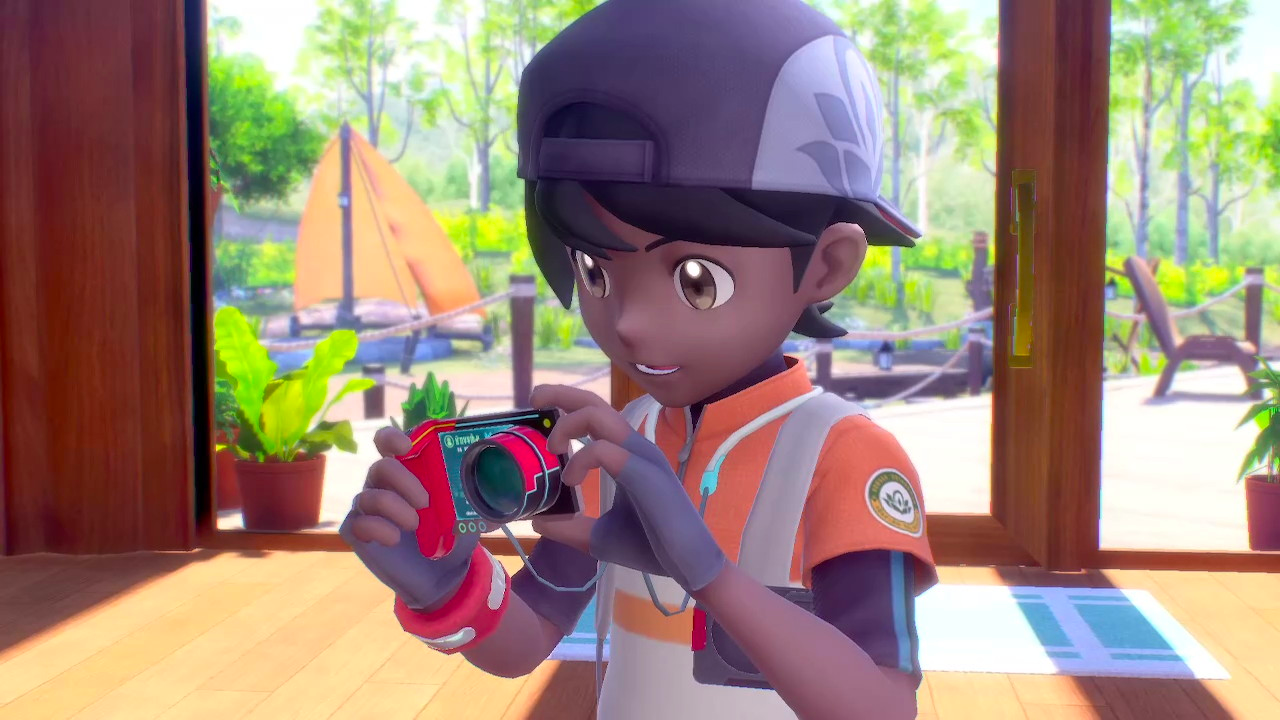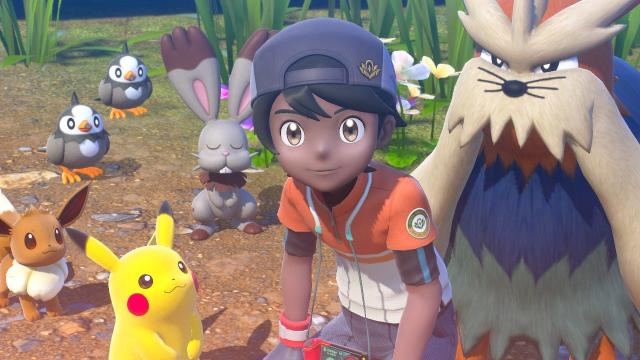As much as the Pokémon franchise goes out of its way to explicitly tell you how much most of the creatures love their trainers — who capture and conscript them into lives of battling their own kind for glory — we all understand how messed up a premise that is when you spell it out. Nintendo’s New Pokémon Snap gives fans a chance to change course a bit and relax.
In the world of Pokémon, there’s little question that the pocketable monsters are (for the most part) thinking, intelligent creatures capable of comprehending complex emotions. But the core games, in particular, have always shied away from that moral issue in their stories which focus on young Pokémon masters-in-the-making who always dreamt of becoming renowned trainers.
When the original Pokémon Snap released for the Nintendo 64 back in 1999, it wasn’t just the gaming giant demonstrating the capabilities of its newest console, it was an invitation to a new kind of interactive Pokémon experience. Beyond rendering many Pokémon in three dimensions for the first time, the original Snap imagined a wholly different kind of Pokémon/human interaction that offered up something the main games weren’t always known for: being chill and taking pictures.
New Pokémon Snap, a spinoff for the Nintendo Switch, follows in its predecessor’s footsteps with a relaxing adventure that has a heavy emphasis on vibes and finding beauty in nature rather than extravagant cage matches. The game introduces the Lental Region, an archipelago consisting of multiple islands whose drastically different ecosystems create the perfect environments for a variety of Pokémon species. Though the presence of certain monsters like Alolan Raichu imply that New Pokémon Snap’s set in the same continuity as the main Pokémon games, there’s little mention of battles or gyms as Professor Mirror and his assistant Rita welcome you to Lental, and invite you to join in their research.

Like all of the Pokémon games’ mentors, Professor Mirror takes it upon himself to teach younger people about Pokémon in general as a part of his more focused research into aspects of the creatures’ lives that are unique to specific regions. Pokémon Sword and Pokémon Shield’s Professor Magnolia, for instance, specialised in the study of the Galar region’s Dynamax energy that caused Pokémon to become gigantic in battle, whereas Johto region-based Professor Elm studies Pokémon eggs and reproduction. All of the professors’ specialties speak to unique dynamics featured in their respective games that, within the story, are framed as being helpful toward your character’s path to battling for greatness.
Understanding Professor Mirror’s research into the Lental region’s Illumina phenomenon — certain plants and Pokémon’s unique bioluminescence — is still a key component to “winning” New Pokémon Snap. But all of the game’s fanciful explanations of what the Illumina phenomenon is and how Mirror learns to recreate it are clever ways of making you think about lighting as you play through a game about taking photographs.
Unlike other games where you fill your Pokédex up by beating creatures within an inch of their lives and putting them in Pokéballs, Mirror sends you out into Lental’s wilds armed only with a camera and the encouragement to respectfully explore the islands from the relative safety of a slow-moving vehicle.
Much as the franchise has always been about the active exploration of one’s surroundings, both of the Pokémon Snap games put an emphasis on looking rather than touching, which might not initially seem like the most compelling way to spend one’s time. But the deeper you get into New Pokémon Snap’s story, it begins to offer up an alternative picture of what becoming a skilled and effective Pokémon specialist can look like, and how the whole “get in the Pokéball, Pikachu” thing isn’t the only way to live.
Rather than working your way through different cities’ Pokémon gyms (with some legendary Pokémon encounters along the way), New Pokémon Snap’s progress comes by way of filling up your Photodex by taking pictures, which Mirror scores at the end of each photo-taking run. Mirror’s overall ratings of your pictures tally up to experience points, which bump up a course’s level, and the game’s way of upping the “difficulty” is by introducing more Pokémon and new routes that provide opportunities for more dynamic photos.
Each course’s patterns emerge pretty quickly once you start playing through, but as you level up and see more Pokémon being joined by others interacting in special ways meant to be caught on camera, the game frames your evolution as a wildlife photographer as a reflection of the wild Pokémon becoming more comfortable with your presence.
Even though New Pokémon Snap’s proper campaign is rather short and certain chunks of dialogue are annoyingly repetitive, it does feature a large plot about the existence of mysterious Illumina Pokémon who acts as the game’s equivalent to gym leaders and legendary Pokémon who can only be found in dangerous, majestic locations. Every shot of an Illumina Pokémon that you bring back to Professor Mirror and Rita’s lab brings you all closer to discovering a wild truth about the origins of Illumina energy that’s revealed toward the end of the story, and it all works to make New Pokémon Snap feel like something more than just a tale of a kid going on safari.
New Pokémon Snap’s story feels designed to be blown through in order to bring you back to the beginning with a better understanding of how to look at the world around you and really appreciate what sorts of candid, gorgeous photos you can set up with patience and proper timing.
While none of the Lental region’s Pokémon are yours, the game encourages you to learn about them and their quirks as they gradually welcome you deeper into their space. Learning which Pokémon respond to music, being fed fruit, or having that same fruit thrown at them is key to snapping images of them in action, but also ones that perfectly capture the monsters’ personalities.
Newer core Pokémon games have introduced features like Pokémon-Amie, Pokémon Refresh, and Pokémon Camp, all of which simulate playing with the Pokémon on your team to forge stronger relationships with them. Though the games’ approaches to that dynamic have grown more visually impressive and charming with each generation, they’ve all been additional features supplementing the major focus on brawling for gains.
But every time you wrap up a run through New Pokémon Snap and start sorting through your photos to decide which ones to keep, the Pokémon are left to return to their lives of doing whatever the hell they want which, in this case, just so happens to be hanging out around the spots you’re likely to be at in the near future.
